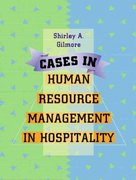Question
Could you explain more about this questions: CASES: OCCASION A. Time: 07:45, Location: Room, Area: Inside. On Monday at 07:30 Marcela Mendez arrived with her
Could you explain more about this questions:
CASES:
OCCASION A. Time: 07:45, Location: Room, Area: Inside. On Monday at 07:30 Marcela Mendez arrived with her mother (30 months). Marcela was left crying and screaming because her mother went to work. The educator calmed down Marcela and gave her breakfast. At 07:45 Leah Wellington (28 months old) arrived at the center and was very happy because she had brought a pepa pig ball. She sat next to Marcela to have a breakfast. At a time when the educator was receiving another child, Marcela bit and scratched Leah.
OCCASION B. Time: 10:00, Location: Play room , Area: Inside. All the children were playing with the blocks, Leah had a big tower built and she was proud that she had done it, at that moment Marcela arrived and wanted to play with her but Leah said no, so Marcela sat next to Leah and She started to build her own tower but she wasn't able to make it as big as Leah's so it was easy for her to knock down Leah's tower and run away.
OCCASION C. Time: 04:40 pm, Location: sandpit , Area: outside . Marcela is one of the first children to arrive in the morning and is one of the last to leave kindergarten. Lately she always has to be supervised by an educator because she is a bit aggressive, she tries to play and interact with Leah and Matilda but if she doesn't get the toys at the time she wants she starts pushing, scratching and biting others to so you can get what you want.
1. Critical reflection of the information gathered in addition to your observations
a. identify or describe the priority for this child in relation to self-regulation and the development of Pro-Social Skills.
Also consider the holistic approach including the use of relationship-based guidance strategies, potential changes to the physical and social environment, and emotional needs of the child:
b. Is the behaviour demonstrated by the child developmentally appropriate? Give a reason for the answer.:
c. Identify how an own life experiences and ideologies on perspectives about children's behaviour will influence your relationship with this child and the development of the plan:
d. What are the impacts of this child's behaviour on other children?:
e.. Identify two strategies could be would use to respond to the needs of other children. :
BEHAVIOUR SUPPORT PLAN
(explication about each item)
-Name:Marcela
-DOB:2yearsand4month
-Designed by- All stakeholders present and involved
-Long-term goal-What do you want to see achieved over the long term?:
A.Concerning behaviour (It's important to list all the concerning behaviour in order of priority. In reality, could be may choose to only work on the first two behaviours; however, listing them makes i think about each observable behaviour and helps to determine which is the most crucial to work on first.
Descriptions such as "naughty", "aggressive", "attention-seeking" are not behaviours - they are interpretations and are ambiguous. What "aggressive" means to one person can be different for another.
ANSWER:
B. Reason behaviour is not considered responsible/considerate(Here is where the reflect on why it is not considered responsible behaviour. Only justifying the reason for needing to modify the behaviour. It helps the reflect on whether it is really important. For example, not good manners such as "please" and "thank you", whilst it may be important, is culturally determined. If a child has a range of concerning behaviours including hurting others, it shows its level of priority compared to other behaviours. Ensure that you reflect and record the reason professionally - e.g., "Annoying the educators" and "Not fair to other children" is not professionally written and is not a good enough reason for changing the behaviour.
ANSWER:
c. possible causes triggers of the behaviour: ANSWER:
d.. Rationale:Why do you feel this is the cause of behaviour?(Only justify each reason by stating what I observed. For example, if I wrote "Frustration is a trigger" you may discuss how the child was working on a puzzle and showing physical signs of frustration, such as going red or sweating, prior to throwing the puzzle across the room
ANSWER:
Step by Step Solution
There are 3 Steps involved in it
Step: 1

Get Instant Access to Expert-Tailored Solutions
See step-by-step solutions with expert insights and AI powered tools for academic success
Step: 2

Step: 3

Ace Your Homework with AI
Get the answers you need in no time with our AI-driven, step-by-step assistance
Get Started


